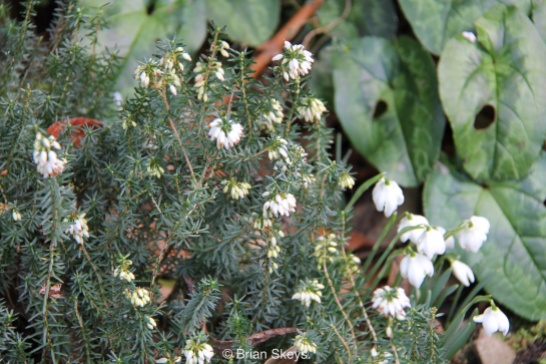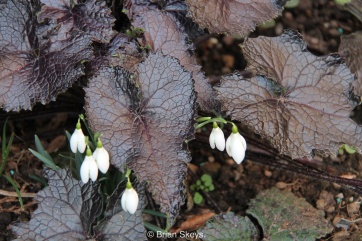Our gardening club, The Black Pear Gardening Club, meets monthly, with speakers during the winter months and garden visits during the summer.
For the February meeting we welcomed Stella Exley from Hare Spring Cottage Plants, York.
The Title of her talk was ‘Chris, Camassia and Chaos’.
Stella regaled us with accounts of the trials and tribulations she went through to provide camassia to Chris Beardshaw for his RHS Chelsea gold medal winning garden in 2015.
It started with a chance meeting at Arley Hall show, following which Chris contacted Stella, to arrange a visit to her nursery. She holds the national collection of camassia and grows other hardy perennials.

He showed Stella his plans for the show garden and she agreed to grow 2000 camassia, individually in pots, to provide the 1000 that he needed.
In order to do this she decided to actually grow 4000, this was on top of the 10,000 that she normally grew, nearly all single handed!
All her plants are grown outside on the floor with only a small poly tunnel and greenhouse to work in. That winter they were ‘blessed’ with two periods of snow which held back the development of the camassia. With her experience of growing them she knew they could not be forced on under cover, even if she had the facilities to do so.
The decision was made to rotate them in and out of the poly tunnel, for only two hours during the day and four hours at night, which she did wearing a head torch. She then started to feed them carefully with liquid feed so as not to scorch the leaves.
Chris visited the nursery to see the camassia in flower for the first time just before the show.
Delighted with what he saw he asked Stella to choose the ones that would go on to the lorry for the garden. To make it more difficult they had to be transported trailer at a time down the narrow track to the waiting artic lorry.
Stella ended by showing us pictures of the gold medal winning garden.


Following a question and answer session, she was busy selling some of the many pots of camassia she had brought with her all the way from North Yorkshire.
There was general agreement that this was one of the most interesting talks we have had.
Stella and the pots of Camassia she brought for sale at the meeting.

I succumbed to the ‘Charms’ of Camassia leichtlinii ‘Sacajawea’ for our Green and white garden. It has ivory white flowers with variegated foliage.
You can visit Stella’s website: Hare Spring Cottage Plants.
The website for the Black Pear gardening Club: BPGC
Do you grow camassia?


























































